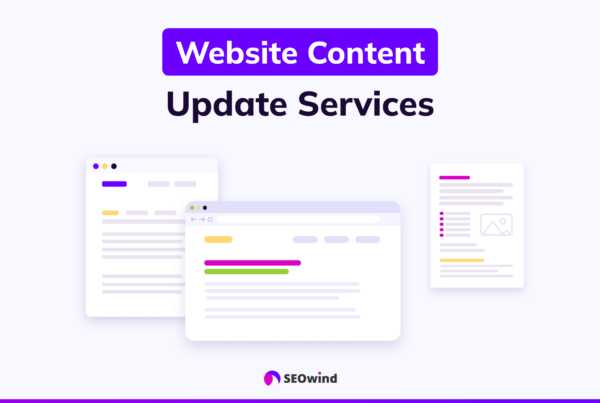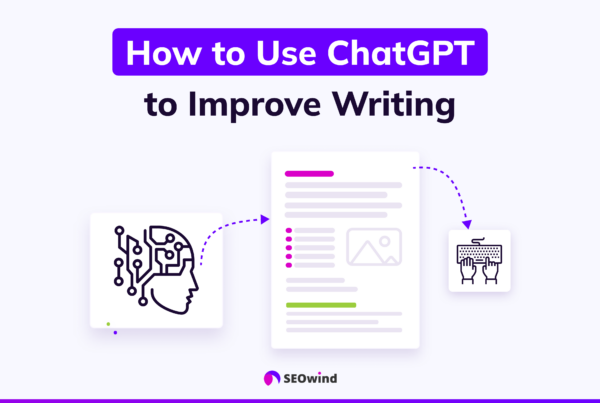Content is still king. That is one inescapable fact among the myriad of SEO requirement changes. You need great content to rank and draw viewers to your website.
What’s more. you also need great content to convert those visitors into paying customers. The way to help you get great content is to do an SEO content audit. There are some great tools for website audit, and they will help you determine if the content you already have is doing its job for you.
These website auditing tools are affordable, and you can find a lot of them with a simple internet search. The trick is to find the right one for your website content and purpose.
What is a Content Audit?
If you know what a financial audit is, then you have a good idea of what a content audit is and does. Just as you go over the books in any given company to see its financial health, a content audit goes over your website’s content to see if it is healthy and performing as it should.
A content audit may be performed more often than a financial one, as website owners need to stay current on the health of their website and its content. You could say that a content audit is the same as doing an SEO content analysis.
Both tasks have the same purpose. They look at the content your website has and see how effective it is. What you are looking for when you conduct these audits are the following:
- Content traffic (low is bad)
- Organic traffic
- Rankings and content deterioration
- Link velocity loss
- Bounce rates rising
- Lower content-attributed conversions
Those are just some of the aspects of website and internet marketing you can examine when you do a content audit. You can expand the audit target and focus on making sure you cover all SEO aspects to make sure your website is performing at 100%.
Just make sure to set clear auditing goals, so you are not wasting your time.
The Benefits of a Thorough Content Audit
Conducting website inventory audits have a lot of benefits, to name a few it
- Provides current data that provides insight into your content’s performance, and helps you make better and more informed decisions.
- Identifies which content or web pages are underperforming and helps you decide what to do with those web pages or content
- Gives you an idea of the best-performing content which you can transform into marketing materials
- Provides insight into your website’s visitors and their likes and dislikes
- Makes content maintenance easier
But these are not the only benefits you can receive from using good content auditing tools. By performing a thorough website content audit, you can find out the reason for any search engine sanction.
Plus, get the reasons why your content is not performing well. Last but not least, a good website audit shows all the strengths and weaknesses of your current content and your strategy. This helps you plan for the future and redirect your content strategy if needed.

Website Content and Inventory Audit – 6 Steps
As with most processes, conducting a content SEO audit is a step-by-step process. You need to follow each step in order to produce a productive report that identifies any and all problems with your website’s content.
1. Content Goals first
You should align your content goals with your company’s goals. Once you know your company’s plan or strategy and its target objectives, then you can construct better content to reflect them.
This knowledge will help you update your strategies. You will be able to stay focused on engaging the website’s visitors and moving them toward conversion.
2. Create a List of Your Content Assets
Making an inventory of your website’s assets is the first step in conducting a content audit.
After listing all the pages in one place, it is much easier to analyze their performance, highlight areas where improvement could be made, and update each content methodically over time so that you’re always staying on top of things!
Whichever tool you use ( Screaming Frog or any other), export data into a spreadsheet. Make sure you include all the relevant points like word count; meta description target keywords number images, etc. You may also want traffic info from Google Analytics too since we’ll be analyzing both technical SEO metrics AND user experience at the same time.
3. Categorize And Analyze Your Content’s Performance
Once you have basic data about content now it’s time to categorize and cluster them.
If you get a clear understanding of the purpose behind each piece of content on your website then you can identify any problems before they arise. By categorizing them, you will get an overview of how your content performs and meets the goals you set.
This is the next step, and the spreadsheet gives you better results at a glance. Now you can do this yourself manually, or you can buy a tool that will do it for you.
Collecting data is not an easy one. The hard work is worth it! You’ll have access to invaluable information that will help your company operate more efficiently.
Content audit – quantitative content performance
The SEO performance metrics are extremely important to pay attention to.
Let’s list the most important ones:
- Top Keywords – Top Keywords are the terms and phrases that a website ranks highly for in search engine results pages (SERPs). A website is more relevant for a certain focus keyword if it appears higher in the SERPs for that term.
- Users – website visitors
- Pageviews – sometimes referred to as page impressions, are used to characterize each time a user accesses a website. A single user will therefore contribute several page views if they click on a page multiple times. Mind that unique pageviews are a distinct metric that counts how many distinct users visit a website, regardless of how frequently they do so.
- Bounce Rate – This is the frequency with which visitors leave a website after just seeing one page. Although there is no set answer for what the appropriate bounce rate should be, you should aim for a number below 50%.
- Average Time on Page – This indicator describes the typical length of time visitors stay on a specific web page. A longer duration may suggest that readers are interested and engaged in your material.
- Links – You should take into account any kind of link on your page. How your content ranks for particular keywords depends on a variety of factors, including backlinks, internal links, and external links. Find out which reputable links are leading visitors to your page.
Content audit – qualitative analysis
After your content auditing process is over, there are extra metrics to take into account. This entails evaluating your content in accordance with standards like:
- Messaging – Are your blog entries written in a manner that is consistent with the voice of your brand? Do they meet the needs of your target audience? If there is a mismatch, you might need to start over and review your user personas.
- Accuracy and Clarity – Is your information written with accuracy and clarity? Keep in mind that Google considers clear, helpful, and information-rich material to be of high quality. Web copywriting that works is concise but compelling and doesn’t use extraneous words or phrases.
- Screenability – How easily can readers screen your content? A writer’s best buddy for breaking up a boring wall of text and making it more aesthetically pleasing are bullet points, numbered lists, and subheadings.
- Quality writing – How well-written is your essay in terms of grammar, syntax, and punctuation? Typo-ridden content comes across as shoddy and untrustworthy and may even drive away readers.
4. Create a List of Content Issues
Now you can go deeper into auditing your content.
Key questions to answer here would be
what content is:
- missing;
- underperforming;
- outdated;
- performing as expected or has gone beyond expectations?
Make sure you know which category is which, and keep the spreadsheet nice and organized through a method that you are comfortable with. You do not want to do this work all over again.
5. Create An Action Plan
Now that you have this important information, you can plan activities that will fix the problem of content web pages and support the excelling content web pages.
These courses of action will include which:
- web pages or content to delete,
- which ones to re-write, or
- re-structure, and so on.
Then you can rank these actions and prioritize from the most important fixes that you need to do to the least important.
Your content audit report should allow you to move from asking what is going wrong to what will be done to improve these underperforming web pages.
6. Conduct Another Audit—Later
Still, it doesn’t end here.
This is an important step that you need to do at the right time. You do need to give your changes a chance to work, so you do not want to do this new marketing content audit in the next week.
Set up a date for the new audit that is in the near future so you can check to see if your plan of action was successful or not. Then at that time, you can go through these steps again to try and fix the problem or problems.
Additional Steps To Include In Website Content Inventory Audit
Internet marketing is a very competitive world. That means you should carry out the following necessary audit steps to make sure you are going in the right direction and beating out your competition.
There is website auditing software that will help you carry out these additional steps and make sure you can make the most informed decision about your own website’s content.
1. Analyze Your Competition
Your competitors help you find what is valuable to your target customer as well as the Google search engine. Once you see what they are doing, you can make small or big adjustments to your content and website strategy.
2. Conduct A Content Gap Analysis
All this step is doing is helping you find the gap between your marketing efforts and your competitors’ marketing efforts. This analysis helps you see areas where your company and its website can improve.
At this time, you can ask the same questions that need to be answered in your own website content inventory audit:
- what content is missing
- what content is underperforming
- what content is outdated
When you get the answers to those questions, you can make the changes you need to get an edge over your competitor.
Content Audit Template
What this web content audit template does is help you check your on-page SEO. This aspect of SEO is still very important and helps you draw more traffic to your content and products.
The good news is that the content audit template will work on a variety of pages, including but not limited to the following- home page, landing page, blog post, or even a form page.
Then the template will provide the reasons why certain on-page SEO is important and why you should have canonical tags linking similar web pages together.
The template is another step-by-step process that has you the page type you are auditing, the URL for those pages, and the canonical tags for each one, then make a note letting you know which pages are in a sequence together. All of this is done in separate columns to help you stay organized.
The next step is to use a Content Inventory Spreadsheet that provides you with an in-depth reference for your audit.

6 Content Audits Tools To Use In 2023
Everyone needs good audit tools to perform their website content audit. Here are 6 good inventory tools that will make this work a lot easier for you:
1. Yoast SEO Plugin
This is a plug-in built for WordPress, and if your website is on that platform, this is the plug-in to use. Its built-in features help your write content as well as optimize the website with the right keywords. It solves all the main problems for you.
2. ahrefs
Besides offering options like domain analysis, page analysis, backlink reports, and rank tracking, you get to see the top pages between you and your competitors.
This way you can find the keywords your competitor ranks for, yet you are not using them at that time.
3. SEMrush
This expensive tool will help you see what web pages need improving. It also provides what web page content is performing well and helps you to focus on similar content to boost your audience and conversions.
It is compatible with Google analytics which will only enhance your audit report.
4. Google Analytics
One of the few auditing tools that do not cost you anything. Although it is not a formal auditing tool, it provides you with key information on who is reading your website content and from where they are located.
This tool also provides the length of time a visitor is on your website and what are your most popular pages.
5. Buzzsumo
If your company has one or more social media accounts, this is the tool to use to audit those accounts. When you search for a topic, you will receive the most shared articles on that given topic.
Plus, it helps you to see how your social media content is doing. It is a great research tool to use as well.
6. Screaming Frog
When you need to crawl your own website, this auditing tool identifies broken links, bad tag titles, absent meta descriptions, and bad redirects.
Plus, you can use it for an internal linking strategy, as it will do most of the work for you. Its strength, though, is its data collection prowess.
Final Takeaways
Doing a website content audit is in your best interests. It helps you find errors and problems that may be driving your website visitors away. Using the right website auditing tools, you can find and fix those problem areas.
The end result will be a nicer user experience, a website that is easier to navigate as well as finding which content needs to be improved or removed. Also, a content SEO audit should help you rank a little better by getting your website within the search engine requirements.
Buy the right website auditing software to make sure your website is running on all cylinders and giving you an edge over your competition.
Photo by Marten Newhall on Unsplash


